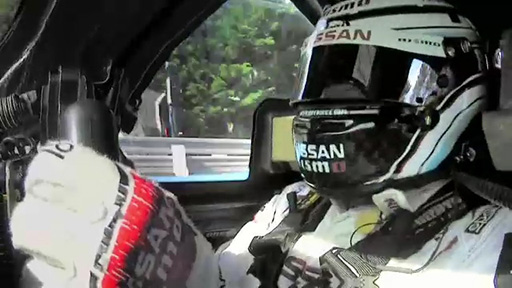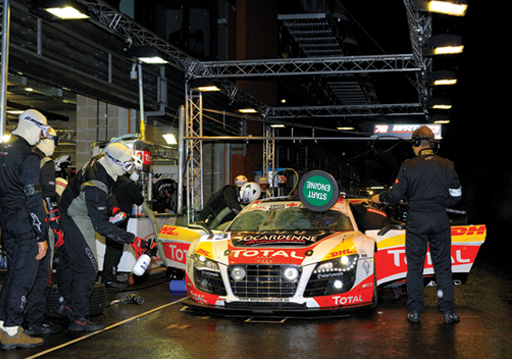1 Life and death communication in motor racing
In this first activity, you will watch a lively extract concerning life and death decisions during a motor racing pit-stop.
Activity 1 Chris Hoy’s motor racing pit-stop
When multiple Olympic cycling champion Sir Chris Hoy retired, he took up motor racing and went to the Le Mans 24-hour race to compete. Watch the video of Chris Hoy’s motor racing pit-stop but please be warned that there is some swearing in this clip so carefully choose where you watch it so as not to cause offence to others. In addition to Chris Hoy who is driving, there are two other main people interacting: the race engineer (coordinating radio communications) and the team principal leading the pit-crew. Using examples from this video make notes on the following questions:
- How does the competition situation influence the purpose of the communication and the tone that is used?
- How are relationships strengthened or threatened through this exchange?

Transcript
Restrict yourself to 20 minutes for this activity. It would be easy to spend hours on it with a very in-depth analysis; instead restrict your time, give your initial responses to the two questions and then read the Discussion to reinforce your learning.
Discussion
This is a very high-pressure situation requiring fast decisions and communication during competition: a race track pit-stop needs to be quick. Their communication has an information function (e.g. ‘replace all four tyres’) and/or an interpersonal function in developing confidence and/or trust and rapport. Analysis of individual interactions when taken out of this intense competition context should recognise the needs of this demanding environment.
There are numerous examples of ambiguous communication or too much information or messages dominated by anger; this often makes these messages less effective. For instance, at one point Hoy has to say ‘can you please stop talking, I’m going to have to come in …’ as he fears for his safety.
The first successful piece of interpersonal communication occurs when Chris Hoy (CH) comes into the pit-stop when his confidence has been threatened:
CH: ‘I’m sorry about that, that’s so annoying …’ [i.e. an apology to the team]
Race engineer: ‘What’s done is done, we can’t change it, lets concentrate and we go again’ [supportive and positive]
CH: ‘copied’ [I have received the message].
In terms of relationships being strengthened or threatened, you might have noticed some of the following examples. Throughout the exchanges tensions run quite high and the team leader’s anger could harm the relationship with his race engineer and team colleagues. One outburst appeared ego-centred and perhaps unusual, e.g. ‘F*** him [i.e. the race engineer], I know what I’m talking about’.
The penultimate exchange between team leader (TL) and race engineer (RE), however, demonstrates listening to each other in the heat of the situation and the working relationship being maintained:
TL: ‘Are you going to tell him [Chris Hoy] that these [tyres] are cold?’
RE: ‘Will do once you’re done’.
After the pit-stop it is noticeable how the race engineer attempts to build rapport and confidence with Chris by asking ‘OK Chris, how are you feeling, everything OK?’
Although we all communicate every day, this video and research into the topic demonstrate that communication and working relationships are a complex set of social skills and behaviours (e.g. Bowes and Jones, 2006). However, here in this course, it is broken down into parts – thereby making it easier to study – and you will revisit this video in Session 2 to make further sense of it.
Right now, at the beginning of this course, you should consider to what extent you use small talk when you catch up with someone. Is small talk pointless chit-chat or a social lubricant?

